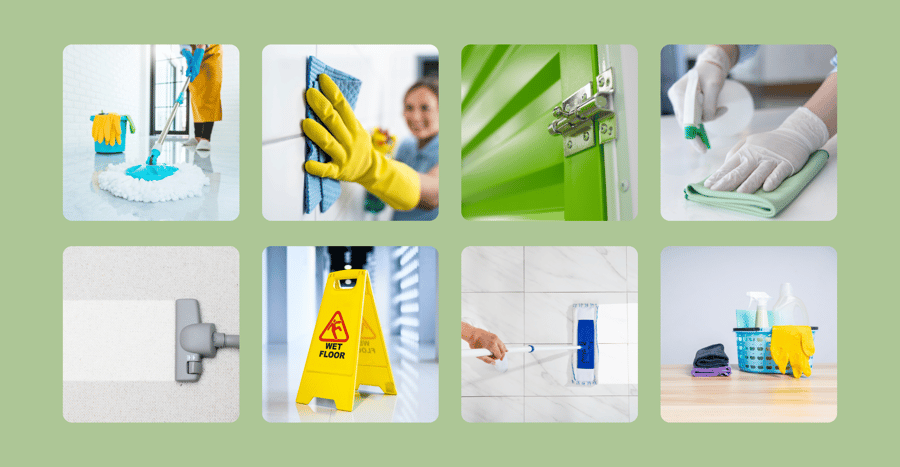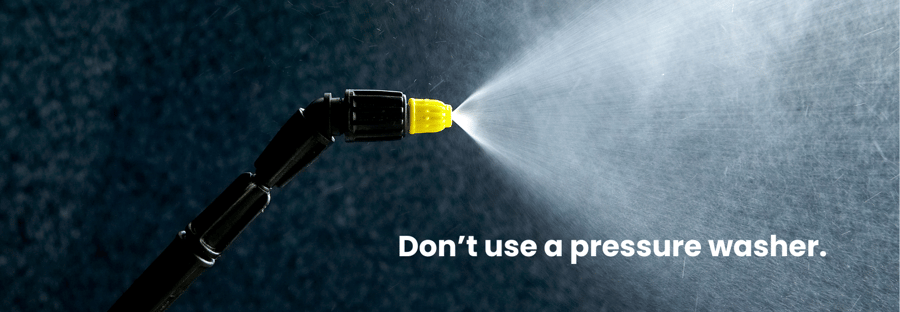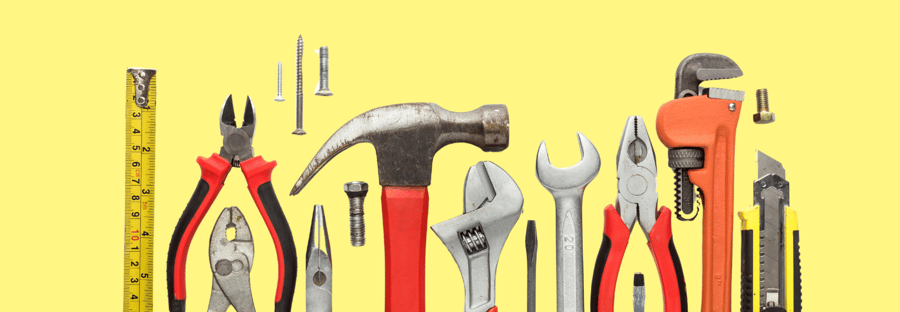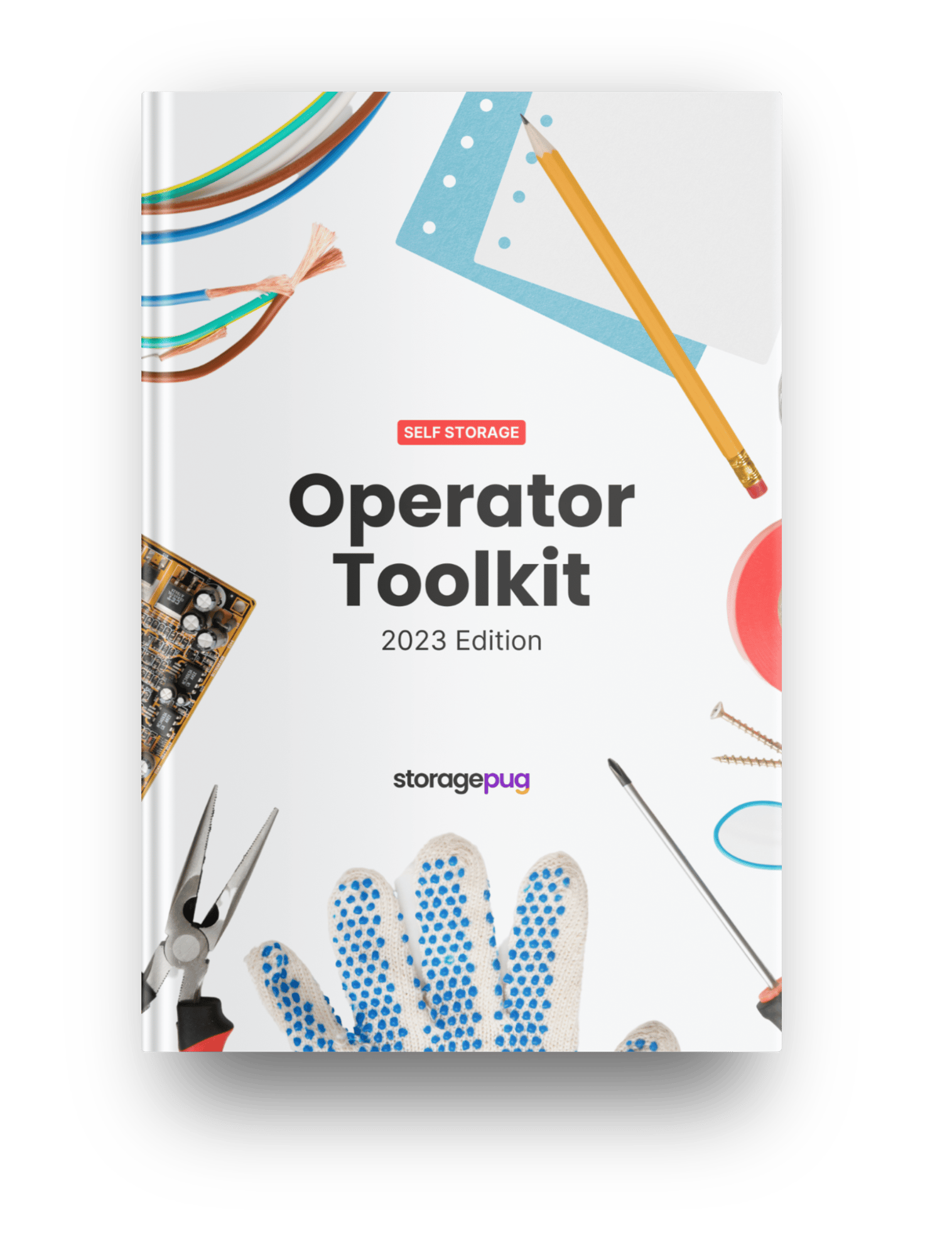Menu
November 15, 2023


Running a self storage facility is tough work.
Whether you’re a manager or an owner-operator, you’re wearing a bunch of different hats while handling the day-to-day, week-to-week, and month-to-month operations of a storage facility.
You’re a salesperson. You’re in marketing. You are a maintenance technician. A janitor. A secretary.
The list goes on, and it seems like it might never end.
When a door comes off its track, who takes care of it? Either you do, or you contact the professionals that need to. When a customer doesn’t pay their rent for two months straight, who has to chase after the payment or manage the lien process? That’s right, you do. It even comes down to you to give the sales pitch when a customer walks through the door.
If you’re managing a facility, you’re pretty much the end-all of everything that needs to be done.
Let’s be honest: no one person can be expected to perfect all of these crafts. And if they come close, it’s usually after years of experience.
We’ve assembled a comprehensive list of self storage management tips for the tasks owners and managers deal with during day-to-day operations at a storage facility. Better yet, we’ve also put together advice and solutions for them!
Our goal with this article is to help bridge any gaps in your skillset. It’s to accelerate your journey to obtaining the experience you need.
For those of you with years of experience already, it’s our hope you’ll also learn a thing or two from other facilities that have contributed to this information.
In the next section, you'll find links to navigate to any other section that interests you. So let's get started!
No matter your storage business’s management style, there are many tasks that need to be handled by a real person.
Usually, this means there’s one person responsible for all of it. But what does that take? How do you maintain storage facilities?
Here’s a list of some of the many jobs you’re expected to handle if you run the day-to-day of a storage facility:
That’s quite a list, isn’t it? Depending on how your facility operates, you might have contractors that handle some of these tasks for you. But most of these aren’t able to be handled by anyone but the person managing the facility—whether you’re the owner or a manager.
Let’s take a look at each one in greater detail.

From the doors to the bathrooms, there is a lot of cleaning to be done at a storage facility. And yes, even cleaning is one of the roles of a self storage manager!
We’ll take a look at some of the areas of cleaning that are relevant to managing your facility and give some context as to why it’s so important to the day-to-day operations at a storage facility. We’ll even offer some tips on how to keep up with it where applicable!
The best time to clean a storage unit is right after a tenant has moved out.
You never know what shape a tenant leaves a unit in. In the best-case scenario, it almost seems like they left without a single trace. But we all know that isn’t always the case—and at some facilities, it’s almost never the case.
Here are some tips to keep in mind:

Keeping your storage units clean after a move-out reduces the chances of something the tenant spilled or left sitting in the unit will cause problems when you go to prepare it for a new customer.
Frequent cleaning also helps ensure you’re not letting dust and grime build up. This is especially important if a tenant rented the unit for an extended period of time because long rentals mean longer periods between deep cleaning the surfaces of the storage unit.
It could have been days or weeks (or longer) since the last tenant moved out and the new customer is moving in.
No matter how long, it’s important to give the unit a bit of care before a new tenant.
Customers don’t expect storage to be as crisp and clean as a hotel rental, but it’s not a good look if they roll the door up and find a layer of dust, cobwebs, and whatever else a vacant unit might accumulate.
Here’s how you can get a storage unit ready for a new customer:
If you had to summarize these steps, it really comes down to two things: Confirming the unit is actually vacant and checking that it’s clean and functional.
To go the extra mile, consider putting together welcome packages for your customers. These can include a variety of items: Pamphlets with information, brochures for other local businesses, coupons for your partners, bottled water to drink during their move-in, and more.
For some customers, the only time they see the unit until they move out might be when they move in. This might also be one of their two main interactions with you and your business. Give them the best first impression possible!
The door is one of the most notable parts of a storage facility.
Think about the big national chains like Public Storage or Extra Space. Their doors are very distinct, and customers can always recognize them at a glance. They’re bright, and they stand out.
Now imagine setting another facility beside one of these large chains. Picture doors that aren’t quite as nice and vibrant.
Whether it’s silly to put so much emphasis on the door or not doesn’t really matter. What matters is your customers’ perception.
These tips will help you clean your storage unit doors effectively:
Don’t do these things when washing your doors:
Washing your metal doors in the sun can cause water spots and residue from the soap to leave them looking just as bad as before you washed them.
Pressure-washing your storage doors can lead to water getting inside the units. This can be especially bad for occupied units, but it’s best to avoid doing it even for unoccupied units.

Similar to using a pressure washer, using ANY water to clean the interior of your unit can lead to water in the units causing problems.
Though harder to see at a glance, your roofing is an important part of your storage facility.
Keeping your roof clean helps prevent damage that can lead to leaks. It also helps your facility look better to potential customers that drive buy!
Here are some tips for keeping up with your storage building’s roof:
Neglecting your facility’s roof means it could be a matter of time before you start to see leaks and other issues, and those cost money to fix!
Everyone knows how to clean a bathroom, right?
Cleaning your facility’s office and bathrooms doesn’t involve a whole lot of mystery. We’re all fairly familiar with things like glass cleaners, vacuums, and other various household cleaning supplies and tools.
Let’s instead talk about the importance of keeping them clean.
The cleanliness of these spaces is an easy eye test for new customers. When a customer walks through the office door to ask for a tour or about availability, a messy, dirty office is a surefire way to make a bad impression.
A clean facility and good advertising can help get a customer through the door, but a clean office can help sell a unit.

SURPRISE!—A large part of operating a storage facility is interacting with your customers.
Whether you’re taking a payment, trying to secure a rental, or responding to concerns, properly handling customer service interactions at your storage facility can seriously impact how long a customer stays and their likelihood of recommending your facility.
For the sake of this post, we’re going to break customer service down into three categories:
Sometimes, your customers will have problems that you need to address.
Whether it’s an issue with something at your facility or something external that is impacting their need for storage or ability to access a storage unit at your facility, this creates an opportunity to make a lasting impression.
Here are some tips for making the right impression:
Let’s talk about best practices for communicating with customers.
There are many channels where customer communication can occur depending on your facility, such as
Regardless of the medium and space, there are some best practices to keep in mind:
It’s important to be clear about who you are and your reason for contacting a customer if you’re the one reaching out.

Logging the interaction in your PMS (or wherever else you manage customer relations) can help you or members of your team communicate with that customer in the future! It creates a more complete and welcoming experience for your storage customers.
Pug Pro Tip: Leaving a customer with next steps helps keep them focused and sets up expectations instead of allowing them to create their own expectations just to be disappointed.
Taking a payment can either be the easiest thing in the world or one of the most difficult.
If you’re just processing a customer’s monthly rent payment for their storage unit, this process can be as simple as a few clicks and a thank you!
Here are some moments when the process might not be that simple, and when your self storage customer service skills will come into play:
When dealing with any of these situations, remember some of the tips we’ve provided for communicating with customers and helping them with their problems:

Proper maintenance at your storage facility can both save and make you money.
If you properly maintain your building, grounds, and equipment, you’ll spend less in the long term. Repair a small leak in a roof and avoid having to replace the roof entirely, for example.
As for making money, better maintenance means better curb appeal and customer satisfaction, both of which can indirectly increase your revenue.
Let’s take a closer look at maintenance at a storage facility.
When it comes to maintaining doors, the level of work required relates to the state of the door.
There are four “levels” of maintenance for your storage unit doors:
Door repairs relate to damaged mechanisms (or even damaged doors) that don’t require a whole new door to be installed in order to fix the problem. One example might be felt runners that have come off or been ground down to the metal. Instead of replacing the entire door, you can look into simply replacing the felt runners.
Replacing your door may be necessary when the mechanisms of the door are going bad or if you’re improving the door technologically.
If you’re rebranding or your paint has issues (such as cracks or bare spots), a coat of paint may be all you need to fix your door.
Restoring the door with coatings or other products can be used as an economical way to bring the curb appeal back without actually replacing the door.
Here are some other steps you should take to ensure your doors are in good condition (and also ensure you don’t void your warranties!):

Keeping your HVAC well-maintained will actually help you on two fronts.
First, it will save you money if you don’t need to pay for a costly replacement down the road. And second, it will help the system work better and deliver the proper temperatures for your storage units.
Here are some tips for keeping your HVAC in great condition:
Any number of small damages can happen at a self storage facility. From someone denting a wall to a damaged downspout, these issues may seem unimportant, but it’s actually rather important to get them fixed.
Here are three reasons you should take care of small repairs at your facility in a timely manner.
Maintain Your Warranties
It’s possible for these little problems to sit for a long time, and leaving them unaddressed can compromise warranties.
Make sure to have even the smallest repairs made in a timely manner. And if your warranty calls for the repair to be made by a professional, don’t ignore that stipulation if you want to maintain your warranty!
Prevent Greater Damage
Sometimes, these small issues can grow into large issues.
A little leak? Just a dent? It doesn’t take much for these to develop into real problems that have consequences at a storage facility.
Maintenance Builds Trust
It’s easier for a customer to trust a facility that is well cared for.
Accruing a lot of little damage over time can make it hard for you, as the manager or owner of a facility, to realize just how bad it’s getting.
When you see a new dent in a door, to you, that may be all it is: one tiny dent that appeared over the weekend since you last did your rounds.
Customers see it differently.
Your new customers see every damage all at once rather than as a slow process occurring over the years.
Don’t let your customers view your facility as the one that isn’t taken care of.
If there is a competitor just as close to your customer that is better-maintained and doesn’t have damage or grime built up, there’s every chance they’re willing to pay some extra dollars to store there.
Here’s a short list of some easy things to address to keep your storage facility’s curb appeal in order:
At a modern storage facility, many tasks you complete throughout your day will revolve around the facility’s software of choice.
There are various types of software you may be using at your facility, but there are four main ones that most storage facilities will have:
Of course, each type of software can have many different uses and functionalities. When talking about the day-to-day operations at a storage facility, it may be more useful to talk about how you USE that software.
Let’s talk about how software ties into the daily operations at a facility.
The main software you’ll utilize on a daily basis at a storage facility is usually the facility’s property management software (PMS).
Depending on the software you use, this is a robust tool that can do many things, including:
The list goes on. The only limitation is what the software developer is willing to add.
Getting the hang of your facility’s PMS is essential to fine-tune your operations. Resist learning it, and everyday tasks can be as painful as pulling teeth. Master it, and you’ll have your operations humming.
Here are some steps you can take to help you learn to fully utilize your PMS (and other software!):
Whether it’s via your PMS or an additional piece of software, you can use software to streamline and improve communication with your customers.
Here are some ways to communicate with storage customers via software:
These tools allow you to turn customer communication into a hassle-free and well-recorded practice.
Some of the best software allows you to automate communications, such as sending email confirmations, text message notifications, and more.
One example is a platform that allows you to press one button to send a text message requesting reviews from customers. No typing required; you just press the button, and the text message is sent!
By improving the efficiency of your communication, your daily operations as a whole become more efficient.
Pug Pro Tip: Many of these tools also allow you to log customer interactions. Doing so enables you to level up your customer service game. You shouldn’t be expected to remember all of the details of conversations you have with people you only see ever few months. Properly logging interactions in your PMS or other software lets you—and other members of the facility’s team—use those notes to improve the customer’s experience down the road.
Whether it’s renting online, using your access control software, or even a mobile app your facility has, customers will often need assistance.
Learning how to help your customers with their tech issues at your storage facility will improve their experience and satisfaction, and it will also improve their trust in your capabilities to keep their items safe!
When teaching your customers how to use your facility’s various technologies and software, here are some things to keep in mind:
By utilizing these tips, you’ll have the best chance of getting buy-in AND understanding from your customers.
Almost every facility these days is going to have a website.
A website isn’t always directly related to software. Some websites may involve a back-end software platform, and some might not.
Regardless, you may need to troubleshoot problems related to your website for your customers.
Here are some common issues that might come up from customers:
It may seem like properly troubleshooting these problems requires being an expert on websites. Thankfully, most of this basic troubleshooting is actually incredibly easy and applies to virtually every website out there.
Pug Pro Tip: We recommend reaching out to your website provider and asking if they can train you on how to address these kinds of basic concerns for your customers. They should be able to supply the education you need to become a customer service superstar!
Not every topic falls neatly into those categories above, but they’re still important to touch on.
Here are some additional matters you deal with day-to-day or week-to-week at a storage facility and how you can handle them.
While slightly different, sales and marketing do go hand-in-hand.
At a storage facility, they’re sometimes done at the same exact time. Self storage is a need-based industry, so customers often discover the facility only when they're ready to make a purchase due to urgency and proximity. Securing the rental is then one of the roles of a self storage manager.
When it comes to your daily operations, though, learning to be a better salesperson is an important part of the facility’s success.
Here are some high-level tips to improve your self storage sales skills:
You can find a full article on improving sales here.
And if you’re looking for some great marketing ideas, check out our comprehensive list of self storage marketing ideas.
When you’re running a storage facility, tenants paying late can often be a monthly occurrence.
Chasing down rent isn’t fun, but it’s a necessary part of running a successful self storage business.
Here are a few ways to make it easier to deal with late storage rent:
Many times, making a payment on their storage unit simply slips a customer’s mind.
To complicate matters further, storage customers are often going through stressful times such as moves, renovations, death of a loved one, divorce, and numerous other unfortunate life events.
Above all, remember to remain courteous and document everything!
One very specific question that many operators have when dealing with operations at their storage facility is how to drill cylinder locks.
It’s not uncommon for storage units to become abandoned with months of missed rent. One of the main ways to recover a portion of that lost rent is by auctioning off the unit. Part of that process involves removing the lock.
There are many types of locks to use for storage units, and cylinder locks are notoriously difficult to drill for many operators.
One solution, sourced from operators like yourself, is to use a cobalt drill bit to do the job.
Whew. Running the day-to-day of a self storage facility involves a lot of work.
It's much more than just sitting bored behind a desk waiting for a customer to walk in. You have to wear a lot of hats, and it's even important to be good at wearing them.
Whether it's cleaning the doors or bathroom, making small repairs (or knowing when to call a professional), or managing customer interactions like a pro, it's no small task.
Here are some more self storage management tips to help you manage your workload:
Want to stay on top of your storage game in the face of tough competition? Check out these resources!
At StoragePug, we build self storage websites that make it easy for new customers to find you and easy for them to rent from you.
